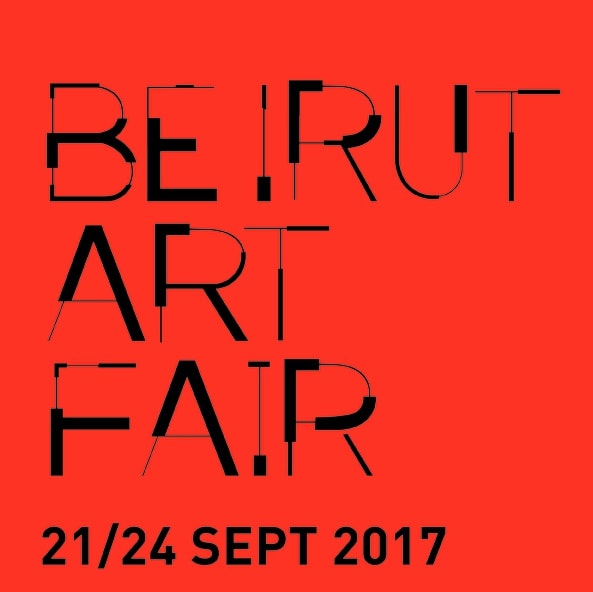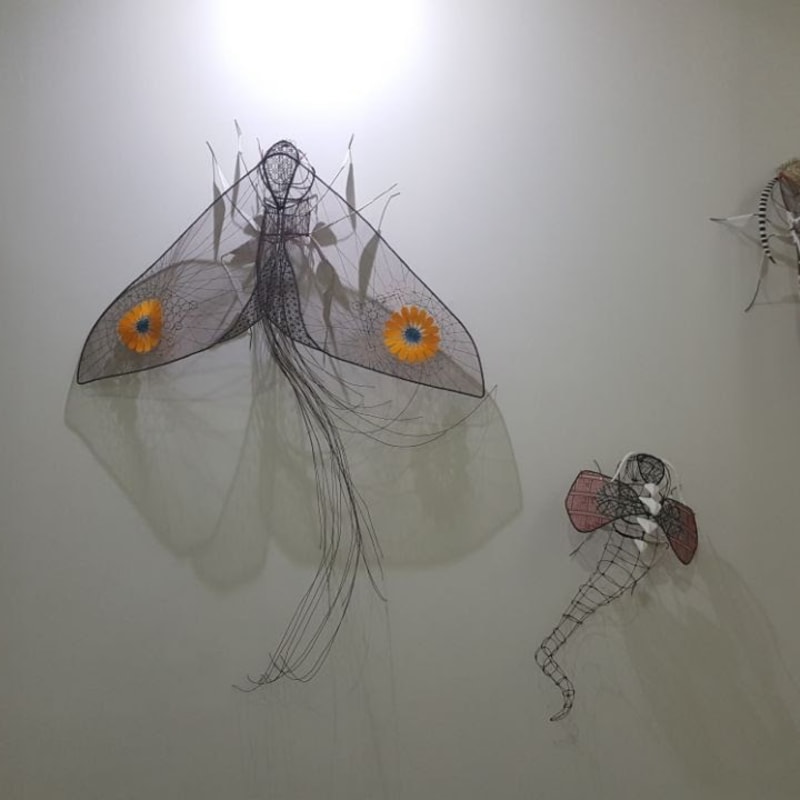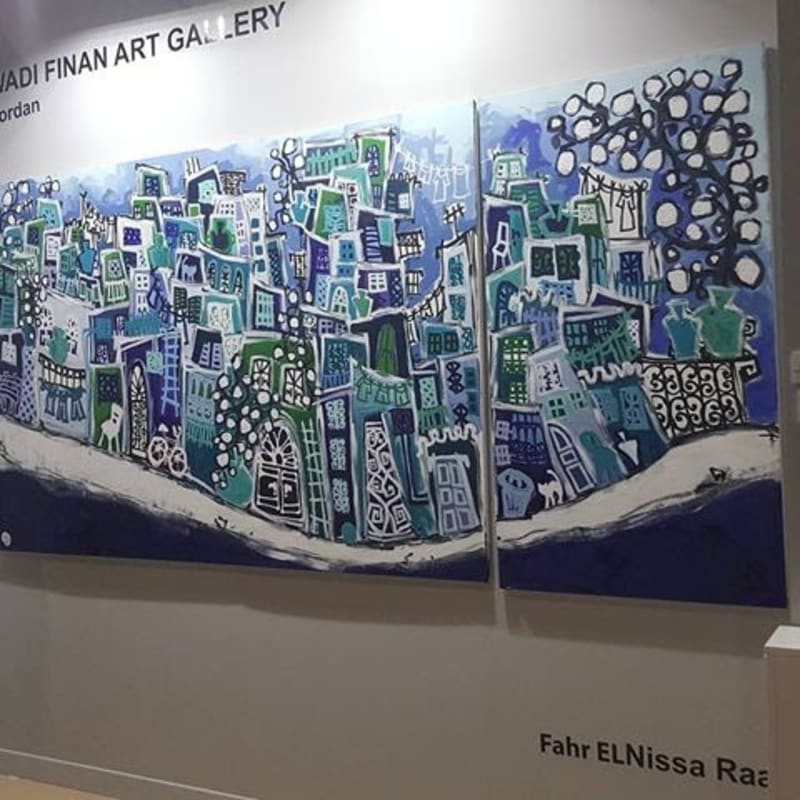Beirut Art Fair 2017: Modern + Revealing
 A15
A15
Katia Al Tal
Renowned sculptor, Katia Al-Tal takes the energy of the Earth at its most fundamental clay level, infuses it with passion, molds it with vision and transforms it into magnificence. Al-Tal’s educational background in psychology, political science and practical theater, along with her unique creative touches have given her the insight and talent needed to produce extraordinary, yet practical pieces suitable for any setting.
To achieve her goal in functional art Katia Al-Tal established a workshop in Amman, Jordan, where she was able to conceive her first collection composed of 3 C’s; Clay, Calligraphy and Creativity. Katia Al-Tal calls her collection “Sadeem”.
Her Arab origin and worldly travels are major inspirations for her sculptures and can be felt in every curve and stroke of her designs.
Al-Tal’s work has been celebrated at numerous ateliers, exhibitions, private art collections and media channels in Europe and the Arab World.
Johanne Allard
‘…My work takes a critical view of social, political, and cultural issues related to the Levant and Arab region, where I have extensively travelled and lived for the past 15 years.
I am a multi-disciplinary artist, with a focus on embroidery and sculpture as a source of storytelling and cultural representation. Most cultures in the world have history in embroidery where common themes vary with linear patterns or flowing pictorial compositions. In the Near Eastern culture, embroidery was a skill marking a girl's path into womanhood and a means to convey a certain social standing.
Reflecting on the turbulence that the Levant and Arab region has been experiencing, I aim to create through embroidery a vivid impression of today’s world, from the American drones circling Baghdad, the Saudi missiles being launched on Sana'a , the shrinking Palestinian territories under Israeli occupation and the tug-of-war over Syria, taking into careful consideration all of the suffering endured.
I have constructed metallic moth insects on which I have embroidered these stories. The moth a symbol of destruction, a metaphor for destroying the fabric of culture in the Levant and Arab area; the moth, for reasons not fully comprehended, is attracted to superficial light (the gold disk in my sculptures) and as a moth to the flame it finds its demise through this illusion.
Each moth bears an embroidery that reflects a style of topography: the Euphrates and Tigris streaming through the round city of Baghdad like tears streaming from eyes, the depiction of the four maps of Palestine showing loss of land since 1947 till present, the land relief of Syria with the Jasmine of Aleppo besieged by barrel bombs and chemical weapons, and the historical houses of Sana'a destroyed by Saudi hellfire missiles; each woven thread to telling its own story.
This is a labor of love, each piece has the national flower of the country it represents, and it pays homage to the beauty of the people that have welcomed me to their countries, to their homes and into their hearts…’
Fatima Murtada
"The hallmark in my work is the human body, mainly the female’s body. " From my point of view, the body is not just a concrete fact. But it is a whole system thatis imbued with endless elements. History is the main factor that shapes these elements.
It is, as though, our bodies are overgrown with events, gestures, fantasies, functions and strategies. Accordingly, the body is a political fact more than a biological one. Furthermore, it is, borrowing Hanna Arendt, a public sphere that reflects the loud speech and, persistently, the silent one. So, the body underlies my comprehension of the world.
Through my art, I try to bring out the conflicts that fire my world. Consequently, the body cannot be but a repercussion of all these conflicts in this diabolic game.
But dealing with the human body as a sublime value cannot be understood with respect to me without taking into account the deep mythological association of man’s existence with animals. From a mythological point of view, the animals grounded the human being’s another dimensions which assured his relation to the sacred. Depending upon this view to the animal, I addressed it as a major element in my works, mainly goats, bisons and cows. But choosing these animals backs to the feminine power they represent historically. For example, and briefly saying, the ancient Egyptians looked at the world as an ill founded one if there was not a complete association of Isis and the cow. The same can be said about the goat in the Babylonian world and its derivatives in the Old Testament, reaching to the idea of scapegoat as it is represented in the Islamic culture. Technically, the thread forms the main element in my work. In this technique, I am Inspired by the Greek mythology (Arachne and Penelope), Ancient Egyptian (Isis), and Native American Navajo Grandmother Spider, the feminine archetypes of creation and magic, where the vulnerable world of the male God was always fixed by the female’s threads. But the transition from line to thread in my works is not a random act. Actually, it is a transition that chimes in with my desire to transmit my art from the abstract line in drawing into something else that can be observed concretely. That is, to transmit myself from thinking to action.
Nissa Raad
“Love, belonging and connection are the universal sources of true well-being.”
I’ve always had a passion for architecture and design, and while studying for my masters in urban design, I became obsessed with cityscapes, streetscapes and urban spaces. I fell in love with all the little details that make up a home, a street or a neighbourhood- particularly those in the Middle East- external details that leave you wondering about the lives of its inhabitants and the internal environment. This exhibition explores these urban landscapes and the “Hara”, a concept that is nostalgic and sentimental to many people.
In urban design, a ‘good street’ is one in which you can chat with your neighbour without having to shout over traffic noise or worry about your safety. Through my collection of work, I sought to evoke memories of simpler times and of people living together in peace and harmony. In this digital age where people are so disconnected from one another and have turned themselves into isolated cyber zombies, the “Hara” offers the viewer a momentary escape from the rat race and is reminiscent of a time of greater simplicity, community interaction and non-digital social exchange. I purposefully excluded figures or people from this collection, because “we” are no longer part of the “Hara”. We are here, contemplating it wistfully from a distance. In preparing for this exhibition, I often found myself being inspired by amusing illustrations in children’s books, perhaps because children often remind us to slow down and enjoy life’s simple pleasures; such as flying a kite or gazing at the night’s sky, or meeting friends in the “Hara”.
Related artists
- Tumblr





